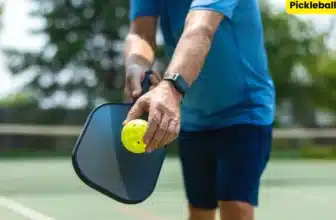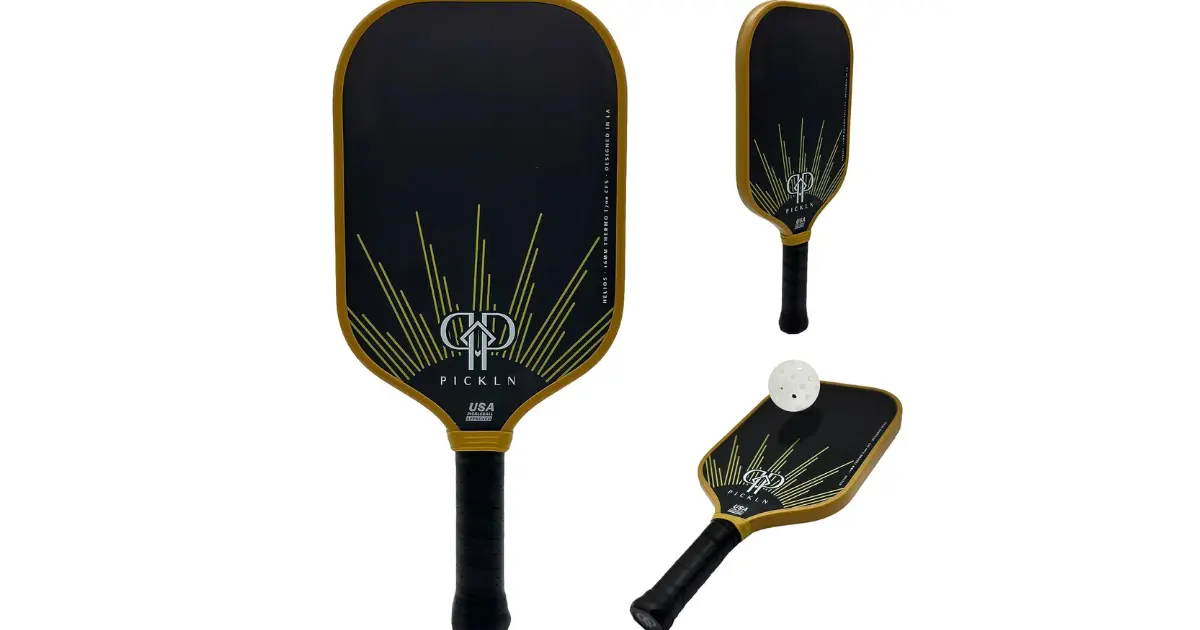
Introduction
Pickleball is a very popular sport, but have you ever wondered what these paddles are made of? As the popularity of pickleball has grown in recent years, the demand for high-quality pickleball paddles has also doubled. You will find a huge number of pickleball paddles in the market each having its own pros and cons. But what makes them different from one another is their composition.
In this article, we will talk about the composition of pickleball paddles. We will explore what pickleball paddles are made of. This way you can make an informed decision about what paddles suit you the best.
Core Components:

The core of a pickleball paddle serves as its foundation. It has a huge impact on the power, control, and feel of the paddle. Most commonly, pickleball paddle cores are made from materials including polymer, Nomex, or aluminum.
Polymer cores paddles are composed of honeycomb structures. These paddles are ideal for power and control and or players who want versatility in their gameplay.
Second common material used for the core in paddles is Nomex. These paddles feature aramid fibers. They prioritize power which makes them favored by aggressive players. Aluminum cores, though less common, provide durability and stability, suited for recreational players.
Surface Materials
The surface material of a pickleball paddle is very important, because this is the part of the paddle that comes into direct contact with the balls. It affects its performance characteristics, including spin, touch, and durability. Some Popular surface material use in pickleball include
- Graphite
- Carbonfiber
- Composite
- Fiberglass
Graphite Surface Paddles:
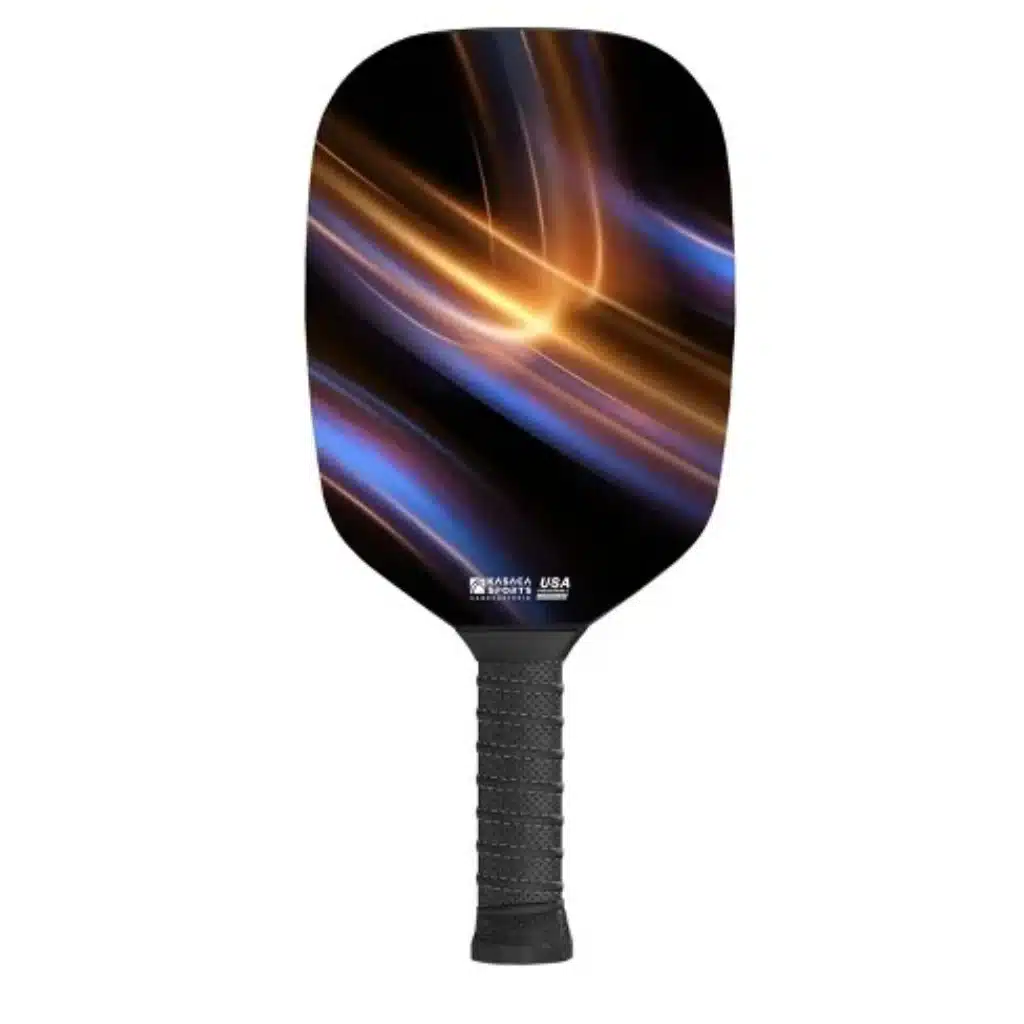
Graphite surfaces offer excellent control and responsiveness. This makes them a top choice among professional players. They are lightweight and thin. Some of the paddles made from this material may measure just a few millimeters in thickness. Although they are lightweight, they can surprisingly be rigid and stiff. This rigidity can provide a solid feel during play.
When using a graphite paddle, players experience consistent strikes and a good energy transfer between the ball and paddle. This characteristic of graphite paddles leads to a more controlled and responsive performance.
These paddles are favored by players who look for finesse and touch over pure power. It is important for players to manage their energy efficiently to avoid fatigue during matches.
Carbon Fiber Surface Paddles:
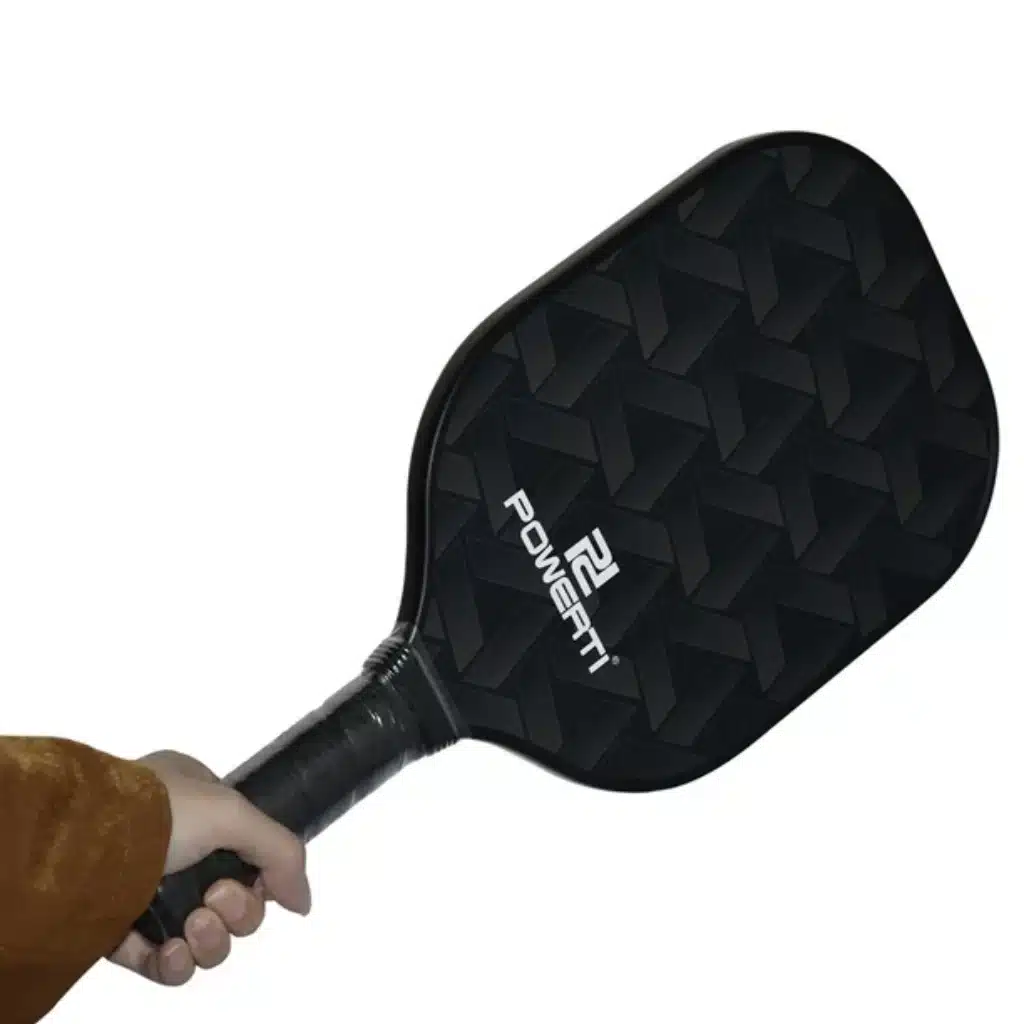
Carbon fiber is another popular choice for pickleball paddle face materials. This material offers a combination of stiffness, lightness, and durability. Unlike graphite, carbon fiber is even more resilient, making it a reliable option for players who want longevity in their equipment.
Carbon fiber can efficiently absorb and redistribute the energy from ball impacts. This results in consistent and precise shots. The players enjoy enhanced control and spin capabilities while playing with this type of paddle.
Hybrid/ Composite Surface Paddles:
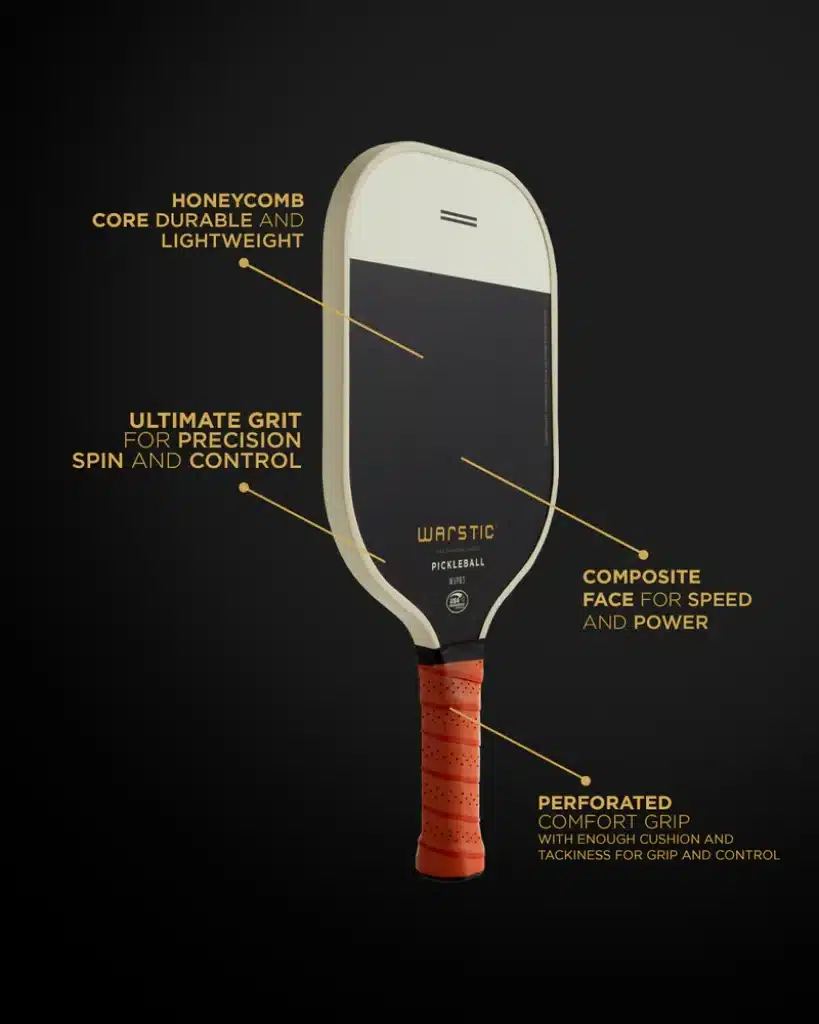
Composite or hybrid surfaces are composed of a mixture of materials. These paddles are loved because they strike a balance between power and control, catering to a wide range of playing styles. Various combinations exist to optimize paddle materials for different playing styles and preferences.
For example, combining fiberglass and graphite can result in a paddle with a larger sweet spot. This offers a balanced combination of power and touch. On the other hand, a paddle that has carbon fiber and fiberglass may provide a more refined feel with added power.
Fiberglass Surface Paddles:
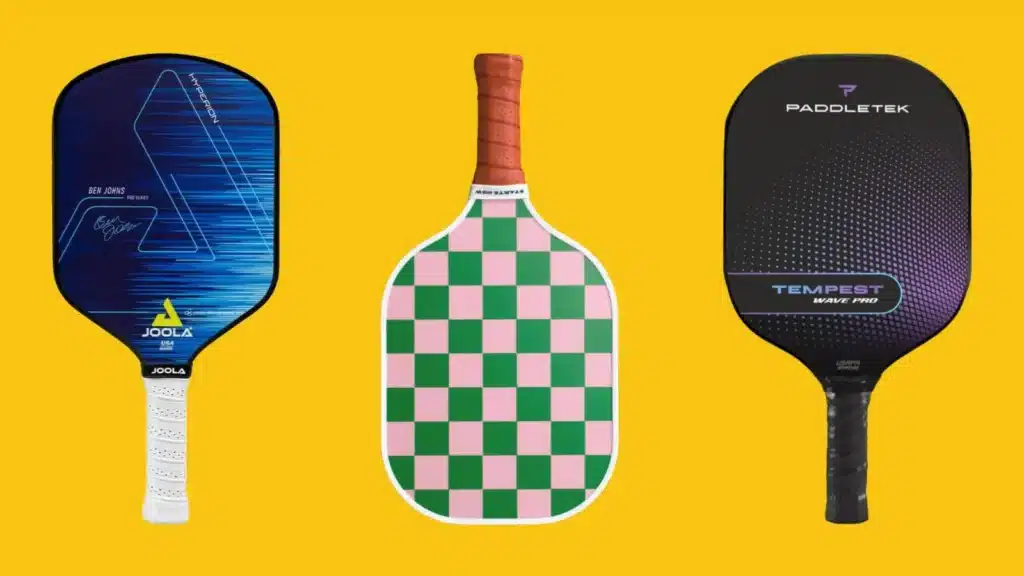
Lastly, fiberglass surfaces are known for their durability and affordability. These types of paddles mostly appeal to beginners and casual players. These paddles are created by compressing fibers under high heat and pressure. This is followed by resin soaking to achieve a glass-like texture.
Fiberglass paddles are surprisingly lightweight which makes them an attractive option for players who want a balance between longevity and maneuverability.
In terms of gameplay, fiberglass paddles stand out for their power-driven performance. It is probably due to their lesser stiffness compared to graphite and carbon fiber. While this design offers increased power, it also results in a smaller sweet spot. This can affect the consistency of shots across the paddle’s surface.
Handle Construction
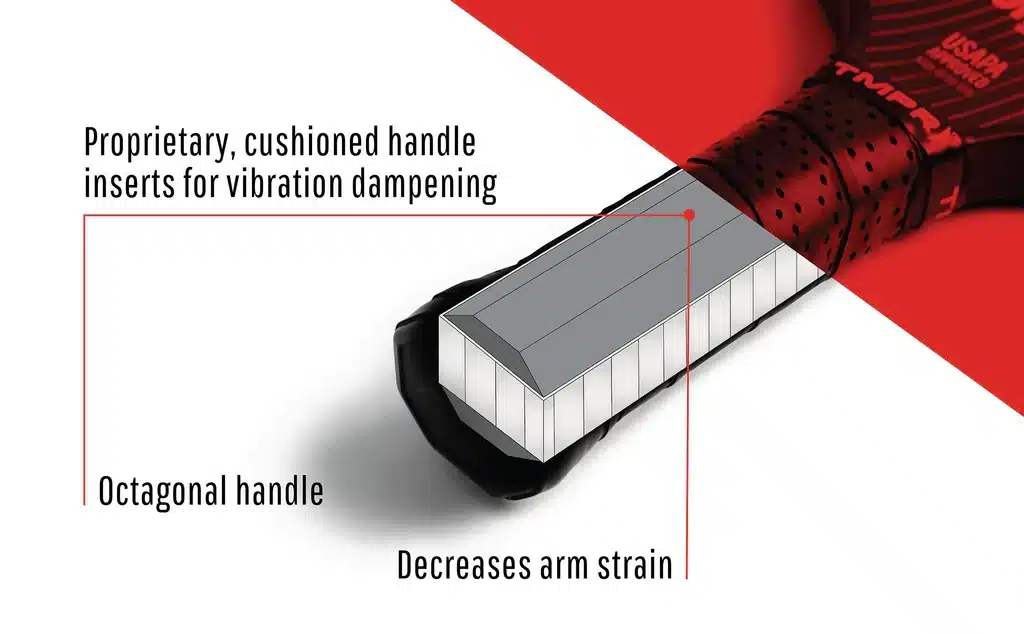
The handle of a pickleball paddle plays an important role in player comfort and maneuverability. Handles are normally constructed from materials like wood, composite, or cushioned grips.
Wood handles, though rare in modern paddle designs, provide a traditional feel and are favored by purists.
Composite handles are composed of materials such as carbon fiber or polymer. These handles offer a blend of strength and lightweight performance, enhancing player control.
Cushioned grips have materials like foam or rubber. They provide added comfort and vibration dampening, reducing fatigue during extended play sessions.
Weight Distribution
Weight distribution in a pickleball paddle affects its balance, maneuverability, and power potential. You will find paddles that are available in a range of weights. They typically range from 6 to 14 ounces. But mostly, you will see paddles with a weight of approximately 8 ounces.
Lighter paddles weigh between 6 to 8 ounces. These lightweight paddles offer good maneuverability and control. They are ideal for finesse players and those recovering from injuries.
Medium-weight paddles usually weigh between 8 to 10 ounces. These paddles strike a balance between maneuverability and power. They cater to a broad spectrum of playing styles.
Heavier paddles normally weigh 10 ounces or more. Such heavy paddles prioritize power and stability and are suited for aggressive players seeking maximum shot impact.
Edge Guard Design
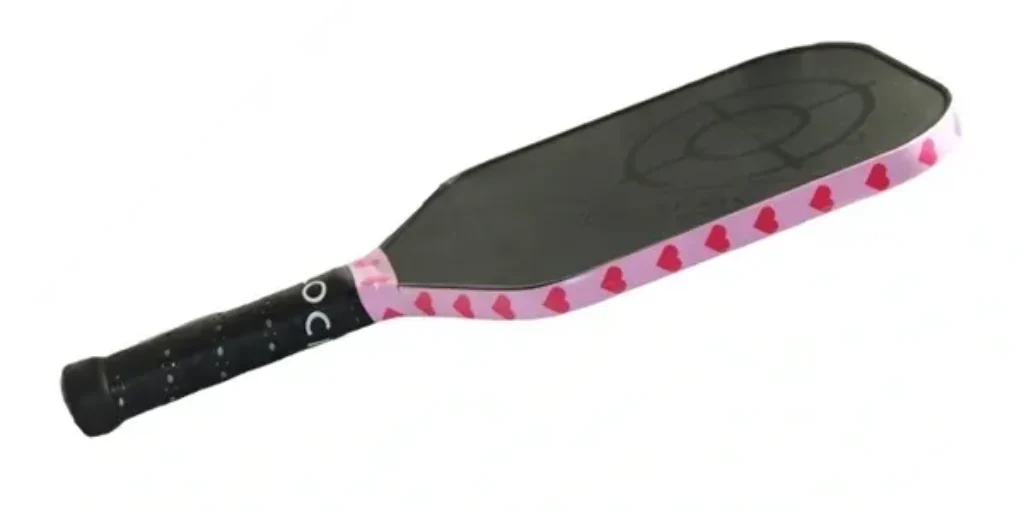
The edge guard of a pickleball paddle basically serves as its protective shield. It guards against damage from the wear and tear or hits with the court surface or other paddles. Edge guards are typically constructed from materials like rubber or polymer. These materials offer varying degrees of protection and durability.
Molded edge guards protect the paddles against impact. This effect reduces the risk of paddle damage during intense gameplay.
Wrapped edge guards usually feature materials like rubber or composite. These materials offer flexibility and shock absorption, enhancing player confidence during aggressive play.
Regardless of design, edge guards play a very important role in protecting the paddle and prolonging the lifespan of pickleball paddles. They also ensure consistent performance on the court.
FAQs
What is the optimal paddle weight for beginners?
For beginners, paddle weight is something that mostly depends on personal preference and playing style. However, paddles weighing between 7 to 8 ounces are often recommended for beginners. These paddles offer a balance of maneuverability and control .
Is there really a difference in pickleball paddles?
Yes! Pickleball paddle material can vary. It can be made of material such as wood, fiberglass, or graphite. Different materials can affect their weight, power, and control. Grip sizes and shapes also differ, which can affect the level of comfort and handling. These factors can affect your performance and preference on the court.
What does composite pickleball paddle mean?
A composite pickleball paddle normally means that the paddle is made from a combination of materials. These materials include fiberglass, carbon fiber, or other composite materials. These paddles often offer a balance of power, control, and durability. This is what makes them popular among players of various skill levels.
Bottom Line
In short, if you know what pickleball paddles are made of, you can make your performance on the court much much better. If you are wondering which paddle material is good, just remember that every single material used for pickleball paddles has its pros and cons. If you explore the core components, surface materials, handle construction, weight distribution, and edge guard design, you can make informed decisions when selecting a paddle.



